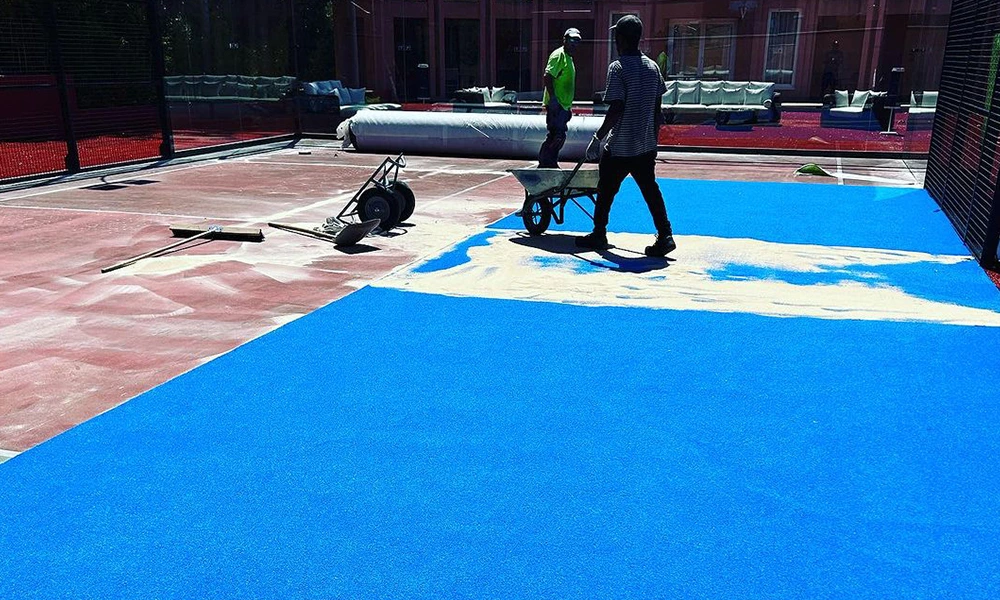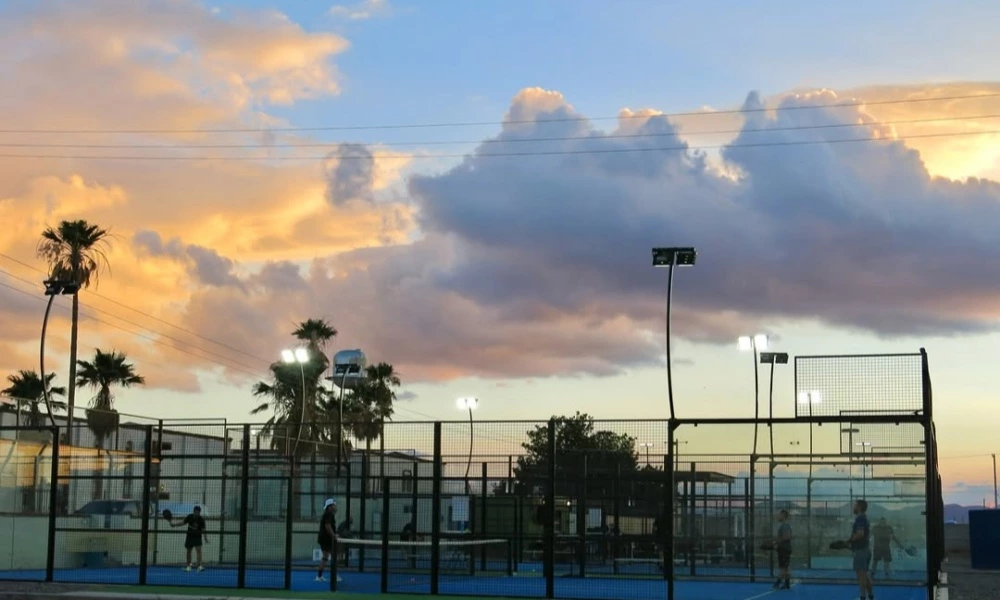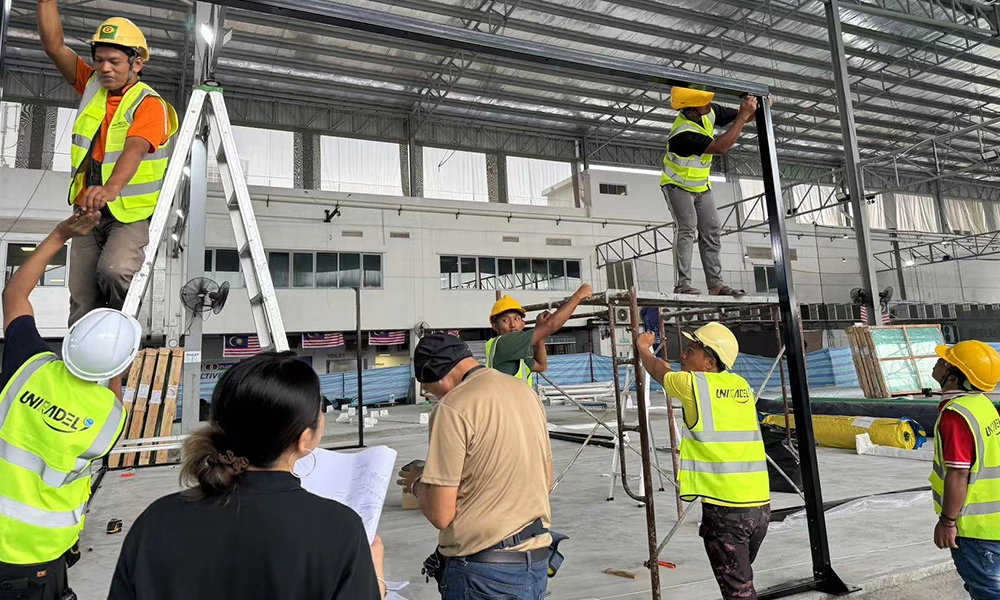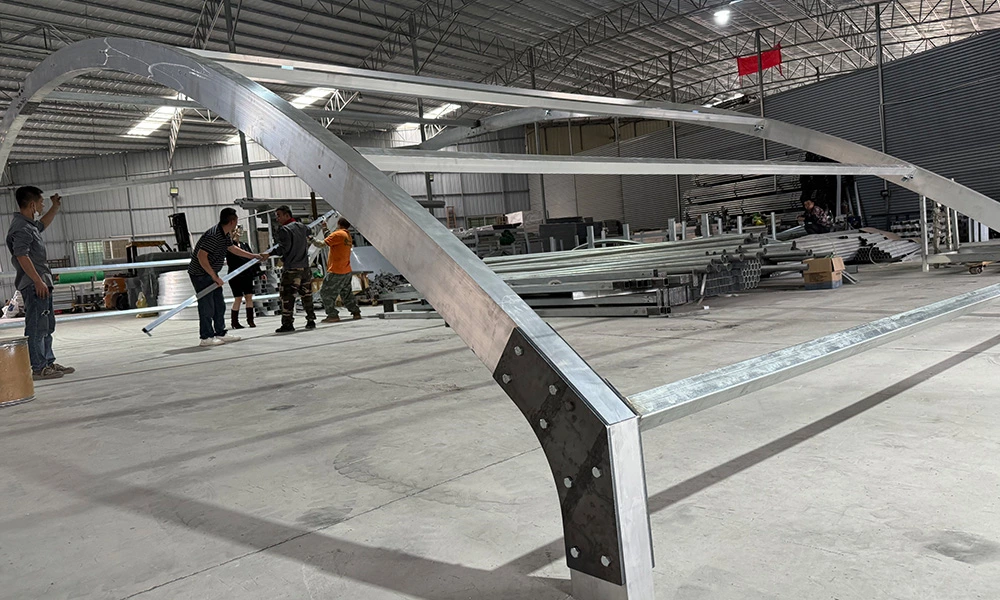Why do padel courts use sand?
Padel courts generally use artificial turf plus silica sand filling structure design. This configuration not only improves the overall performance of the court, but also significantly improves the players' game experience and safety. As a key component of the court system, sand plays multiple functions to ensure the stability, comfort and durability of the court.

Stabilize the turf structure and ensure the quality of the game
The primary function of silica sand filling is to fix the artificial turf, keep it flat and stable, and prevent the grass from tipping over or deforming. During the game, the grass is not easy to move under the support of sand, thus forming a uniform game surface, effectively avoiding irregular ball bounces. This stability enables players to move and return the ball more confidently and play at their best.
Provide cushioning and shock absorption to prevent sports injuries
The silica sand filling layer plays a cushioning and shock-absorbing role during the player's movement, which can absorb some of the impact force, thereby reducing the pressure on the ankles, knees and joints. This is especially important for high-intensity and fast-moving padel sports. Common sports injuries, such as knee strain, ankle sprain, Achilles tendon strain, etc., have a greatly reduced incidence with the support of a good buffer system.
Suppress polluted particles and maintain court hygiene
Unlike hard ground or grass, artificial turf filled with silica sand can effectively block dust, fallen leaves and other pollutants from directly entering the roots of the grass, thereby playing a certain protective role. The silica sand layer is easy to clean, making daily maintenance of the court simpler, extending the service life of the court and improving the overall aesthetics.
Excellent drainage performance, adaptable to all weather
The good water permeability of silica sand ensures rapid drainage after rain, preventing water accumulation from affecting the game. In rainy or humid areas, drainage becomes one of the important indicators for judging the quality of the venue. The sand filling layer works in synergy with the drainage system at the bottom of the lawn to keep the court in all-weather use, greatly improving operational efficiency.

Which type of sand is most suitable?
**Fine-grained silica sand (Quartz Sand)** is usually used as the filling material for padel tennis courts. This kind of sand has uniform particles, high purity and no dust, which not only enhances the stability of the field, but also prevents the wear of the soles or scratches on the skin. The fine texture also ensures that the player's movement trajectory is more natural and smooth, and there will be no safety hazards such as slipping.
Key elements to provide professional game experience
In general, sand is not only part of the structure of the padel field, but also a core factor to ensure the quality of the game, sports safety and durability of the field. GZUNIPADEL's professional-grade stadiums built around the world all use high-quality silica sand, combined with high-standard turf systems, to provide customers with high-performance, low-maintenance padel solutions.
If you need to recommend a specific type of silica sand or filling amount based on the climate of different countries and regions, you can also tell me, and I can provide you with more practical suggestions.




